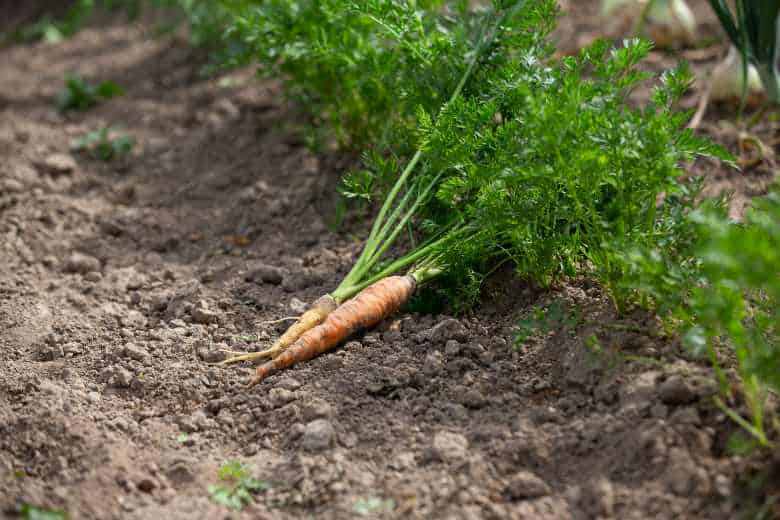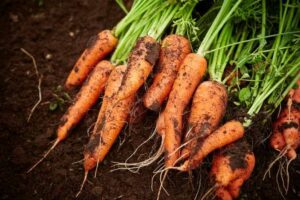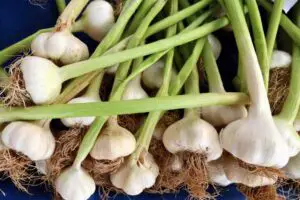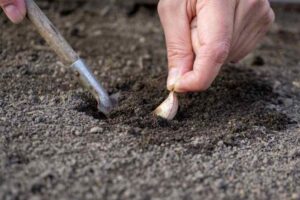
Are you wondering when the best time is to plant carrots in your garden in Arkansas? As a cool season crop, carrots thrive during Arkansas’s mild springs and falls but do not tolerate the state’s hot summers well. This guide will provide you with the optimal planting windows for carrots in Arkansas and tips for successful growth.
Carrots are a cool season crop that thrives during the cooler months in Arkansas. While you can plant carrots as early as February in some parts of the state, the optimal carrot planting seasons are spring and fall.
In this guide, we’ll discuss the best times to plant carrots in Arkansas and provide tips for successful carrot growth.
1. Early Spring Planting (March – April)
One of the prime times to plant carrots in Arkansas is during early spring from March through April. The soil during this period has had time to warm up from winter but is still cool enough for carrot germination and growth. Nights remain fairly chilly, which carrots prefer.
In north and northwest Arkansas, you can start planting carrots as early as late February or early March when the soil can be worked. Central and southeast Arkansas have a bit later start, aiming for mid-March plantings. By the end of April, it’s pushing the upper limit for spring plantings as daytime temperatures increase.
When planting carrots in early spring, select quick-maturing varieties that will be ready to harvest within 60-70 days. ‘Nantes’ and ‘Chantenay’ types are good options. Make successive plantings every 2-3 weeks through April to extend your harvest. Space seeds 1/2 inch deep and 1 inch apart in rows 12-18 inches wide.
Provide shade cloth or mulch on sunny afternoons as carrot roots can become bitter or greenish if exposed to too much sunlight. Keep the soil evenly moist through spring as carrots need steady moisture to develop properly. Watch for flea beetles – they are common pests in spring and can riddle carrot leaves with holes.
2. Summer Planting (May – June)
Carrots are not ideally suited for summer planting in Arkansas due to the heat and hit-or-miss rain patterns. The soil can become hard and dry, making it difficult for fragile carrot seedlings to emerge. Plus, hot weather causes carrots to branch, resulting in odd shapes.
If you must plant carrots during the summer, confine plantings to May and early June before temperatures skyrocket. Again, quick-maturing varieties of 50-60 days are best. Mulch heavily and water regularly to keep the soil moist. Also, consider growing heat-tolerant carrot varieties like the ‘Bolero’ or the newest hybrids that hold up better in the southern heat.
Keep expectations low for summer plantings, as bolting or low yields are common. But some harvest is still possible by shading plants and giving them ideal growing conditions. Consider summer as a trial period and focus your efforts on spring and fall when conditions better suit cool-loving carrots.
3. Fall Planting (August – October)
Fall is one of the best times of year for carrots in Arkansas as the weather cools back down. Plant carrots from August through mid-October for a fall harvest. Here are some tips for fall planting:
Select intermediate and main-season variety carrots that take 65-80 days to mature. Decrease spacing to 1/2 inch between seeds for a better fall crop.
Aim for an August 15-31 planting window for the first fall crop. Then follow up with successive plantings every 2-3 weeks through mid-October. This extends your harvest into winter.
Soil drainage is critical, so pick raised beds or add generous amounts of compost or well-rotted manure before planting.
Keep newly emerged carrots well-watered as rain can be unpredictable mid-summer. Mulching helps retain moisture around roots.
Row covers or mini-greenhouses allow you to get a jump start on growth with warmer nighttime temperatures in fall. Remove them once roots develop.
Pests are less of an issue than spring but watch for carrot rust fly larvae that cause roots to become deformed or cracked.
With some TLC, fall is an ideal time to cultivate a bountiful harvest of crisp, sweet carrots through Thanksgiving and sometimes into early winter before a hard frost in Arkansas. Succession plantings provide carrot pickings for months!
Carrots in Containers
If you live in an apartment or do not have outdoor garden space, containers allow you to grow carrots on patios or decks. Select a container at least 12 inches deep since carrots require uninterrupted root growth. Fill with a potting mix designed for vegetables.
For containers, choose bush-type carrot varieties and sow seeds 1/4 to 1/2 inch deep, thinning to 1-2 inches apart. Water daily and fertilize weekly with a balanced vegetable food during growth. Shading may be needed on hot, sunny porches. Harvest baby carrots or mature roots once they reach size. With diligent care, container carrots can provide a harvest too!
Factors to Consider When Choosing a Variety of Carrots to Plant in Arkansas
Here are some key factors to consider when choosing a variety of carrots to plant in Arkansas:
- Maturity Time – Choose quick-maturing varieties (50-60 days) for spring and summer plantings and longer season types (65-80 days) for fall. This allows time for roots to fully develop before heat/frost.
- Bolt Resistance – Opt for slow-bolting varieties that will hold off flowering longer when temperatures start increasing in spring or fall. Good options are ‘Nantes’, ‘Chantenay’, and ‘Imperator’ types.
- Soil Type – Heavy, clay-like soil does best with bolt-resistant varieties and short, thick carrots like ‘Nantes’. Looser, loamier soil can handle longer carrots.
- Intended Use – Choose baby carrots for salads or canning; standard types for eating fresh or juicing; large storage kinds for winter storage.
- Color – Orange carrots are standard but some like yellow, purple, and white heirloom types for diversity. Color doesn’t affect taste.
- Disease/Pest Resistance – Consider traits like resistance to leaf blights, celery leaf spot, or carrot rust fly that are issues in Arkansas’ climate.
- Growth Habit – Bush types are suited to close spacing; tapered types need room to shape up straight without crowding neighbors.
- Fresh Market Appeal – Straight cylindrical carrots resemble store-bought and appeal to both children and shoppers. Misshapen ones may get ignored.
Testing varieties in different microclimates can help narrow options for the best-performing and most productive types to grow in your Arkansas garden or farm. Regional trial data is additionally helpful.
Conclusion
while Arkansas’s warm climate is not ideally suited for growing carrots year-round, with careful planning you can successfully cultivate two crops of this cool season veggie during spring and fall seasons. By selecting appropriate varieties and planting dates, providing optimum growing conditions, and practicing crop rotation, you’ll be enjoying homegrown carrots straight from the garden for many months. Give Arkansas carrots a try – you may become a fan!






